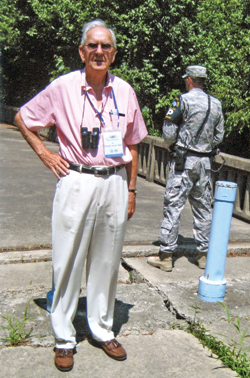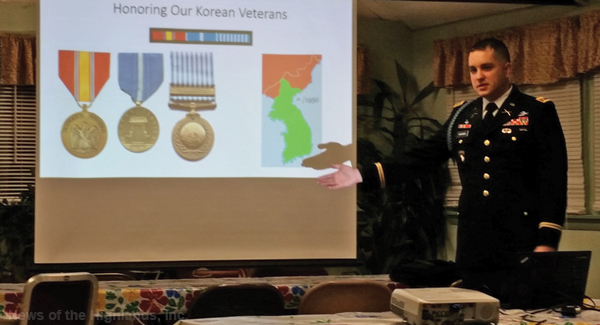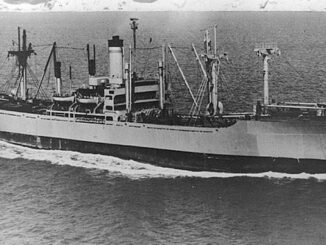
Ray Mellin received a hero’s welcome last month when he returned to Korea for the 66th anniversary of the landing of American troops. The Cornwall-on-Hudson resident, a member of Task Force Smith, had fought in the first battle of the war in 1950. Now he was a guest of the City of Osan, along with eight other Americans.
The city paid for their flight from America, as well as for their meals and lodging. The Americans traveled in a small bus, with a sign identifying them. The group included three veterans from Task Force Smith, and six members of veterans’ families.
Where ever they went, Mr. Mellin drew crowds of young people (who were attracted by his Korean Veteran’s cap). “It was unreal,” he said, “they stopped me in the street, asked me about the war, and wanted to have their picture taken with me.”
Ray Mellin, who grew up in a children’s home, had enlisted in the Army in 1949. After serving in a presidential honor guard, he responded to a posting for a lab technician and transferred to Fort Sam Houston, where he was trained as a lab technician. In one of his stateside assignments, he drew blood from Gen. Omar Bradley (who later became the first chairman of the Joint Chiefs of Staff).
At age 21, Ray Mellin shipped out to Japan, where he was due to work in a clinic. He had barely unpacked when war broke out in Korea, and he got his one taste of combat in the Battle of Osan. His unit’s mission was to delay the enemy at all costs. Task Force Smith was outnumbered, and its mortars bounced off the enemy tanks. Mr. Mellin was captured and spent the next 37 months as a prisoner of war.
In 2012, Mr. Mellin returned to Korea as a guest of the South Korean government. This year, he visited from July 1 to 6. He stayed in the best hotels, as a guest of the city, and he ate at the finest restaurants — passing up the seaweed, but trying almost everything else.
He saw the Freedom Bridge, which he crossed after the cease fire along with thousands of prisoners from both sides. And he entered a tunnel that was used by the North Koreans to infiltrate the south. The tunnel was seven feet wide, six-and-a-half feet high, and a mile long.
At the end of the visit, his hosts thanked him for coming, and said they hoped he would return next year.
After returning to the United States, Ray Mellin sent this thank you note to the mayor of the city that served as his host.
Hon. Kwak Sang Wook
Mayor, City of Osan
Osan City Hall
Korea 18132
Dear Sir:
It was such a pleasure to meet you and the rest of the people who took such great care of us in South Korea. This was such a memorable trip back to Osan, and what a difference 66 years has made. South Korean people should be proud of their country and what they have achieved. I feel honored to have been slightly responsible in helping as a member of the United States Army Smith Task Force. I spent 37 months in a North Korean prison camp, and saw South Korea in shambles when I left to return to the United States. What you and the people of South Korea have done to restore your country is just unbelievable. Your country can hold its head up high with pride!
Our trip with your hospitality was fantastic — it could not have been better. It was so strange to compare my first thoughts about South Korea when I arrived there as a 21-year-old soldier, wondering then why I was going there to fight. Now I know, and am so proud to see the results rendered by you and your country! What an inspiration you and your countrymen are to me, and I hope the rest of the world!
Thank you ever so much for your time and kindness to treat us so royally.
Raymond Mellin



